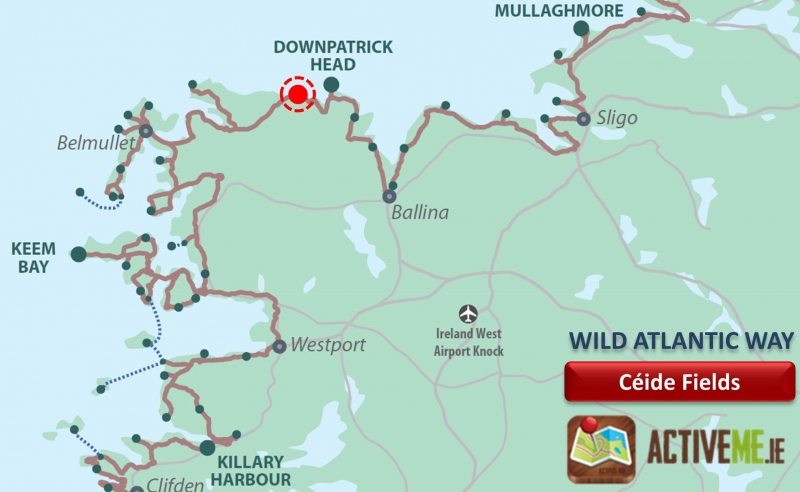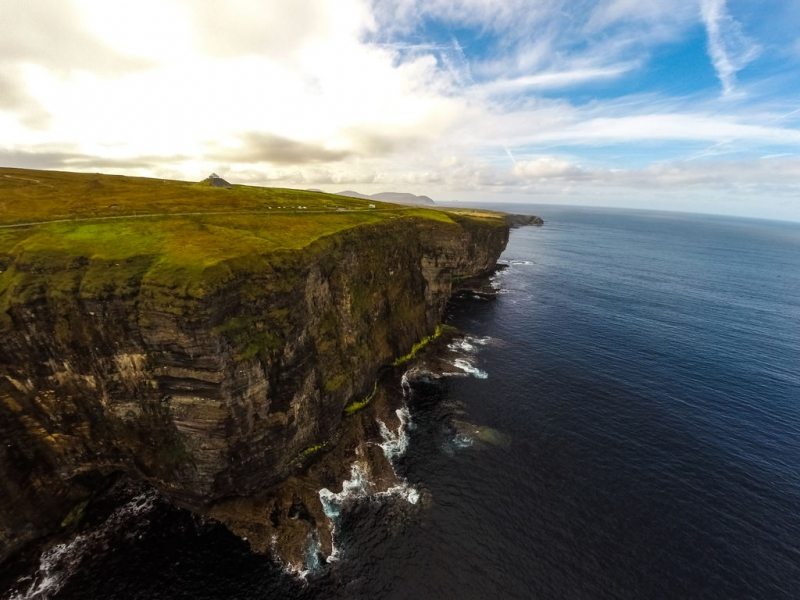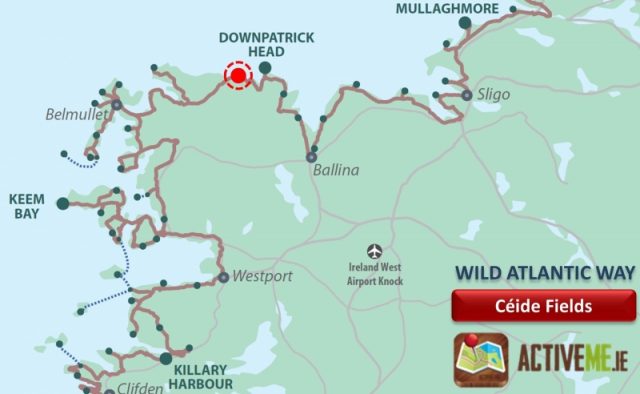- Created: June 24, 2013 11:09 am
- Updated: December 12, 2017 10:59 am
- Distance Instructions
- Distance 0 m
- Time 0 s
- Speed 0.0 km/h
- Min altitude 0 m
- Peak 0 m
- Climb 0 m
- Descent 0 m
The ancient Céide Fields are on the north County Mayo coast in the west of Ireland, about 8 kilometres northwest of Ballycastle. The site is the most extensive Stone Age site in the world and contains the oldest known field systems in the world at nearly 6,000 years old (4,000 BC) and over 1,500 years older than the pyramids in Egypt.
The discovery of the Céide Fields originally began in the 1930s when a local man, schoolteacher Patrick Caulfield, noticed piles of stones while cutting turf for fuel. He saw the stone were placed in a line which was not natural and below the bog. It was only 40 years later when Patrick's son Seamus, having studied archaeology, began to investigate further he discovered a complex of fields, houses and megalithic tombs covered by bog over 1,000's of years. The Visitor Centre is located beside some of the most spectacular cliffs and rock formations in Ireland and a viewing platform is positioned on the edge of a 110m high cliff.
The ancient Céide Fields are on the north County Mayo coast in the west of Ireland, about 8 kilometres northwest of Ballycastle. The site is the most extensive Stone Age site in the world and contains the oldest known field systems in the world at nearly 6,000 years old (4,000 BC) and over 1,500 years older than the pyramids in Egypt.


The discovery of the Céide Fields originally began in the 1930s when a local man, schoolteacher Patrick Caulfield, noticed piles of stones while cutting turf for fuel. He saw the stone were placed in a line which was not natural and below the bog. It was only 40 years later when Patrick’s son Seamus, having studied archaeology, began to investigate further he discovered a complex of fields, houses and megalithic tombs covered by bog over 1,000’s of years. The Visitor Centre is located beside some of the most spectacular cliffs and rock formations in Ireland and a viewing platform is positioned on the edge of a 110m high cliff.




